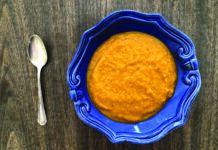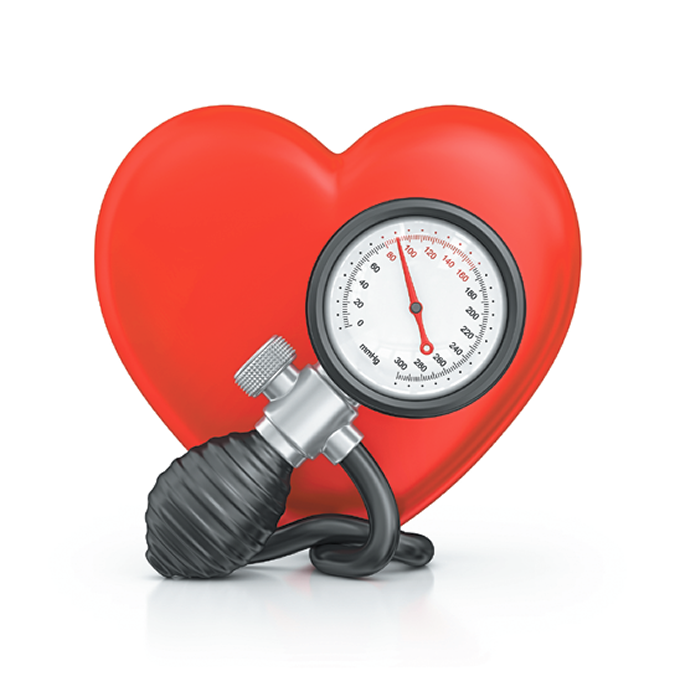Nearly half of all adults in the U.S. have high blood pressure. If not controlled, this generally symptomless “silent killer” can lead to serious consequences, including stroke, kidney disease, heart attack, and blindness. Fortunately, high blood pressure can be prevented—and controlled—through healthy lifestyle choices. Engaging in regular physical activity, managing stress, limiting alcohol, quitting smoking, regularly taking blood pressure medications as prescribed, and achieving and maintaining a healthy weight are all important, and eating a healthy diet that’s low in salt and rich in vegetables and fruits is essential.
Extensive research has provided a pretty clear picture of how high blood pressure can be prevented and lowered through diet.
DASH: In 1997, a group of researchers published the results of a clinical trial of the effects of dietary patterns on blood pressure. Called the DASH trial (Dietary Approaches to Stop Hypertension), this 11-week controlled feeding trial studied three diet patterns. One diet pattern in particular (now known as the DASH diet) substantially lowered blood pressure compare to the typical American diet. It also lowered total and LDL (bad) cholesterol levels without raising blood triglyceride levels (although it lowered HDL cholesterol levels as well). This heart-heathy diet was rich in fruits, vegetables, and low-fat dairy products, and reduced in total fat and saturated fat compared to a typical American diet. Since that time, many additional studies have confirmed the impact of a DASH-style diet on blood pressure and other markers of cardiovascular health.
Healthy fats and proteins: While the effectiveness of the DASH diet for lowering blood pressure has been convincingly proven, there is more that can be done within this overall pattern to boost heart health even more. To further refine the make-up of a heart-healthy dietary pattern, the Optimal Macronutrient Intake Trial to Prevent Heart Disease (OmniHeart) tested the effects of three variations of the DASH diet pattern:
- a low-fat, carbohydrate-rich diet similar to the DASH diet (where 58 percent of calories came from carbohydrate, 15 percent from protein, and 27 percent from fat);
- a pattern that replaced 10 percent of the carbohydrate with plant-based unsaturated fats (from olive oil, canola oil, and olive oil spread); and
- a pattern that replaced 10 percent of the carbohydrate with plant-based protein (mostly from sources like beans, legumes, nuts, and seeds).
In the latter two diets, the 10 percent reduction in carbohydrate was achieved by reducing grains and replacing some fruits with beans, legumes, nuts, or seeds to increase plant protein or unsaturated fats. Saturated fat was low (six percent of calories) in all diets. All three diets dramatically reduced blood pressure, total and LDL cholesterol levels, and estimated coronary heart disease risk (by 16 to 21 percent). But the best effects were seen when some carbohydrate was replaced with either protein or unsaturated fat. “This landmark trial showed that people shouldn’t fear healthy fats or protein,” said Dariush Mozaffarian, MD, DrPH, dean of the Friedman School and editor-in-chief of Tufts Health & Nutrition Letter. “But, regardless of carbohydrate, fat, or protein content, any of these diets were far better than a typical American diet for improving blood pressure and other cardiovascular risk factors. Choosing healthy foods matters.”
Salt and Other Minerals: A separate study published in 2001, the DASH-Sodium trial, found that eating healthier foods (like fruits, vegetables, and low- or nonfat dairy products) and lowering salt had separate, synergistic effects on blood pressure. High intakes of sodium cause water retention—which means more blood volume, and therefore more pressure on the blood vessels (higher blood pressure).
Foods in the DASH diet are rich in micronutrients that lower blood pressure—like potassium and magnesium. Potassium (found in plant foods like sweet potatoes, bananas, oranges, leafy greens, and broccoli) counters the blood-pressure raising effect of sodium by helping the kidneys remove water from the body as urine. Magnesium (found in dark, leafy greens, whole grains, and legumes) helps the blood vessels relax, allowing them to stretch, which reduces blood pressure. Calcium (found naturally in many foods including dairy products, almonds, and dark, leafy greens) is also involved in the health of blood vessel walls. To help keep your blood pressure in a healthy range, focus on eating plenty of vegetables, fruits, nuts, legumes, and whole grains; healthy plant oils like olive, canola, and soybean oils; and dairy products and fish. “Limit intake of added sodium and sugar, red and processed meats, and refined carbohydrate,” says Alice H. Lichtenstein, DSc, director of the Cardiovascular Nutrition Laboratory at the Human Nutrition Research Center on Aging and executive editor of Tufts Health & Nutrition Letter. While potassium and magnesium supplements have been shown to modestly lower blood pressure, too much can be dangerous. “The best approach is to stick to healthy food choices,” says Lichtenstein.
Take Charge!
Try these tips to prevent or control high blood pressure:
KNOW YOUR NUMBERS: Have your blood pressure checked once a year or as your doctor recommends.
GET YOUR NUTRIENTS UP: Get plenty of potassium, magnesium, fiber, healthy fats, plant-based proteins, and other nutrients by including nuts, beans, dairy, vegetables, fruits, plant oils, and modest portions of whole grains.
CUT THE SODIUM: Aim for less than 2,300 milligrams a day. Use herbs, spices, and strong flavors like onion, garlic, chili peppers, lemon juice, and vinegars to flavor foods in cooking and at the table.
PREPARE FOOD AT HOME: Precooked foods, starchy snacks, and convenience foods are major sources of dietary sodium. Preparing your own food allows you to control the amount of salt added.
CONTROL WEIGHT: Even modest amounts of weight loss can help individuals with overweight and obesity control blood pressure. Combine the healthy diet tips listed here with portion control, an increased awareness of motivations behind overeating, and mindfulness of hunger/satiety cues. Professional guidance from a Registered Dietitian may be helpful.
GO BEYOND DIET: Be as physically active as possible, don’t use tobacco products, limit alcohol to no more than one drink a day for women and two for men, sleep at least seven hours a night, and explore ways to reduce and relieve stress.
LISTEN TO YOUR DOCTOR: Take all blood pressure medications as prescribed.
For more information on the DASH diet, including sample menus, see the National Institutes of Health Your Guide to Lowering Your Blood Pressure with DASH, available at:





















How many every day people do you think would understand a word of what was just written? How many people think of food servings in grams? Or percentages of what they had eaten during a day. I understand a lot about what you are trying to explain to the general public because I taught Home Economics 50 years ago. I have a lot of science in my education background, plus I keep up on what is happening in the nutrition world. Why don’t you get on the street and talk to people and ask them what you just said…to explain to you what you are trying to tell them. I have been frustrated about this for YEARS! I guess being stuck at home has given me more time to think. I am wearing my mask every where I go. Hope you are too.. Hope 2021 is better, but it’s gong to be a while.
Today’s classrooms have progressed from 50 years ago! I think this is great information. If one doesn’t understand some or all of the words written, one has the internet to help define the nomenclature.